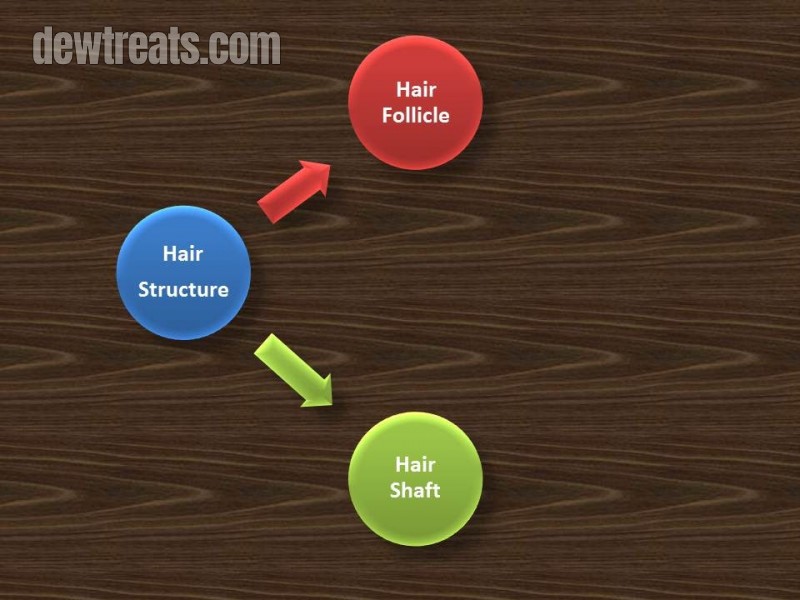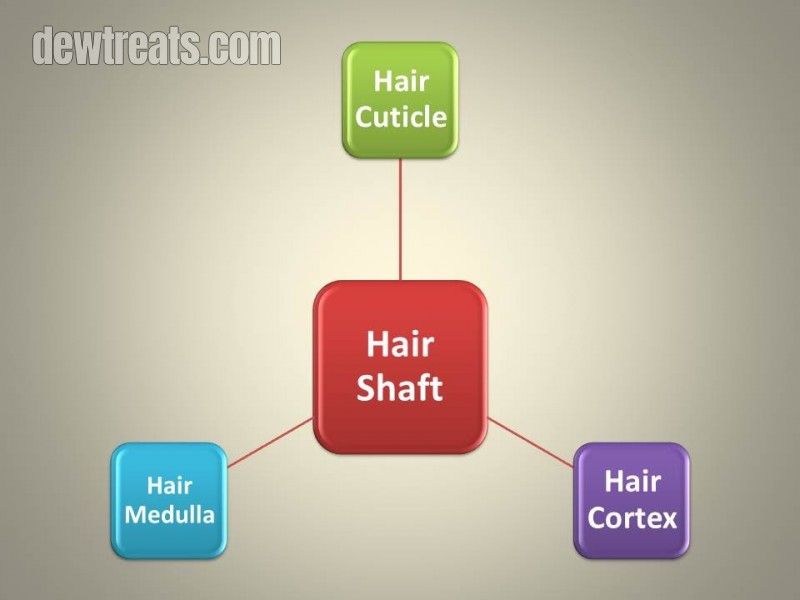Hair structure could be split into cuticle, cortex, and medulla. Heat, pollution, humidity, stress, and exposure to chemicals are the most affecting factors to hair loss.
Hair structure:
For many individuals, hair is a natural part of their appearance even adults or younger, and an aspect of their character. We wonder what hair is made of when we look at a mirror. Hair may also provide protection: it helps to prevent the rays of the sun from touching our scalp. Dust, dirt, and sweat are kept out of our eyes by eyelashes and eyebrows. And the hair in our ears and nose helps to keep germs and other foreign particles out.
Hair emerges from the follicles found at the intersection between the dermis' deep layers and the hypodermis. A small vessel flowing through the inside of the hair shaft supplies blood supply, thereby supplying the hair with all the essential elements it requires to stay healthy, such as amino acids, mineral salts, or vitamins.

Hair is an epidermis derivative and consists of two different parts: the follicle and the hair shaft. The follicle is the basic unit for hair development. For certain hair types, the hair shaft consists of a cortex and cuticle cells, and a medulla.
Glands cover the hair shaft, the most important of which is the sebaceous gland, which produces sebum that serves as a natural hair lubricant. Pores evacuate the sweat formed by the sweat glands on the surface of the scalp.

Hair structure could be split into three distinct sections:
-
Hair cuticle:
The cuticle is the protective layer of your scalp, consisting of overlapping cells, but facing inward, like fish scales or roof tiles. A healthy cuticle is flat and smooth. This gives shine to your hair and protects the inner layers against damage. It also minimizes the flow of moisture in and out of the underlying cortex, thereby preserving the balance and versatility of the hydration of your hair.
-
Hair cortex:
The hair cortex determines the key part and color of your hair. It consists of long filaments of keratin which are held together by bonds of disulfide and hydrogen. Your cortex's wellbeing is largely dependent on the integrity of the cuticle that surrounds it.
An intercellular cement rich in lipids and proteins unites the cells of the cortex. Melanin is also found in the hair cortex. Melanin is the pigment responsible for the color of hair, formed by specialized cells called melanocytes.
-
Hair Medulla
The medulla is your hair's innermost layer. It consists of transparent cells and air spaces.

What will decide the color of your hair?
Melanin is a natural pigment present as we mentioned in the hair cortex. Melanin determines your hair color. When this pigment's development slows down, the hair turns grey or white.
The types and amount of melanin in your hair defines your hair color.
Genetics play a major role in the form of melanin with which you are born. The two kinds of melanin you may have are the following:
-
Eumelanins: Offer dark colors to hair.
-
Pheomelanin: offer light colors to hair.

Another important function of melanin is to protect hair from sunlight and ultraviolet.
As you age, melanin goes through major pigmentation changes. In other words, the color of your hair will not remain the same color. External variables, such as contaminants, pollutants, and atmosphere, may also affect the darkening of color. The slowing down of the production of melanin is simply a part of aging. The slowing down of melanin does not only affect the hair pigment. It also impacts the vitality of hair. Therefore, grey hair, devoid of melanin, also has a brittle, delicate texture.
So, can we enhance melanin sustainability in our hairs?
-
Foods rich in iron:
Dark green vegetables such as spinach, legumes, broccoli, quinoa, tofu, dark chocolate, fish, bananas, tomatoes, soybeans, lentils, nuts, and seeds such as cashew, peanuts, flax seeds, and pumpkin seeds.

-
Foods rich in copper:
The absence of copper will decrease the amount of melanin in your hair. So, copper-rich foods such as leafy green vegetables, nuts, and seeds, sweet potatoes, chickpeas, dark chocolate, avocados, etc., should be eaten daily.

What are the factors that cause damage to your hair?
-
Pollution
One of the main contributors to damage your hair, especially when you live in a metropolitan city, is pollution. smoke and contaminants settle into your hair and skin causing dryness and itchiness.
-
Over-washing the hair
Although it's necessary to wash regularly, don't over-wash your hair. Natural oils are removed from the scalp by over-washing and the hair becomes dry and brittle. Instead, twice a week, use a mild but powerful shampoo that will protect your hair from wear and tear.
-
Heat and Styling tools
Over time, hair that is permanently exposed to styling tools especially heat styling appears to become fragile and rough. Cranking the temperature up will dry the hair quicker, but it will also make the hair incredibly brittle. Heat breaks down the temporary bonds that keep polypeptide chains within the hair together. Over-exposure to heat may damage the structure of the hair irreparably and can also damage the scalp, resulting in hair loss.
-
Humidity
Pores and cuticles could be opened in humid environments and so be affected by any hazards.
-
Exposure to chemicals
This involves painting, lightening, and perming services intended to penetrate the outer protective cuticle to directly impact the inner cortex. Perming chemicals break down bonds of disulphate, which keep the keratin polypeptide chains together. If these chemicals are over-exposed to the hair and skin, significant harm may occur.
-
Unhealthy nutrition
It may cause hair loss if you don't get the vitamins, minerals, and other nutrients that your body requires from your diet. Too little protein in your diet, for example, can damage healthy hair and hinder the ability of your body to develop new hair follicles. Extreme weight loss could also lead to hair loss.
-
Stress
Stress-induced hair loss is usually temporary, and you should expect your hair to stop shedding and begin to grow back steadily after around six to eight months.
Our dew treats for you today are about...your hair structure and factors that damage it. But we have more details, advice, and knowledge tips to help you to have healthy and beautiful looking hair.



You must be logged in to post a comment.